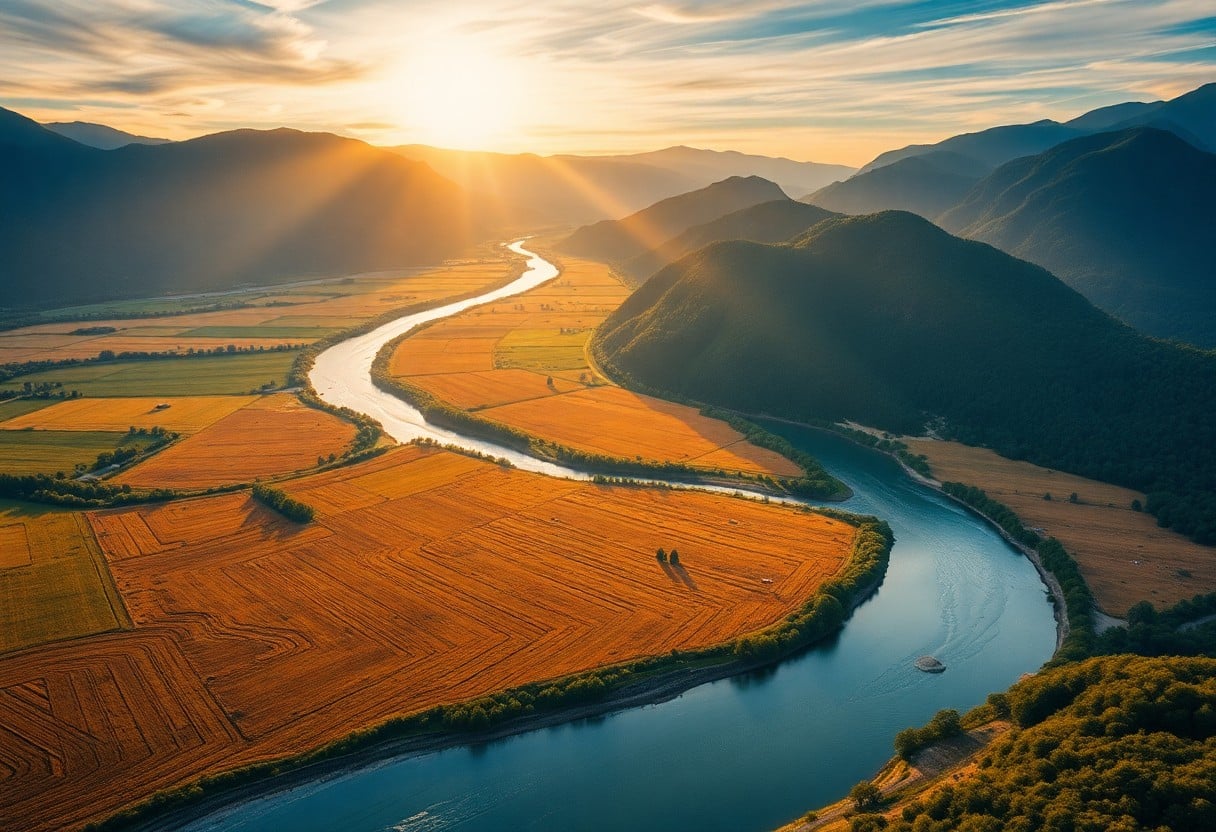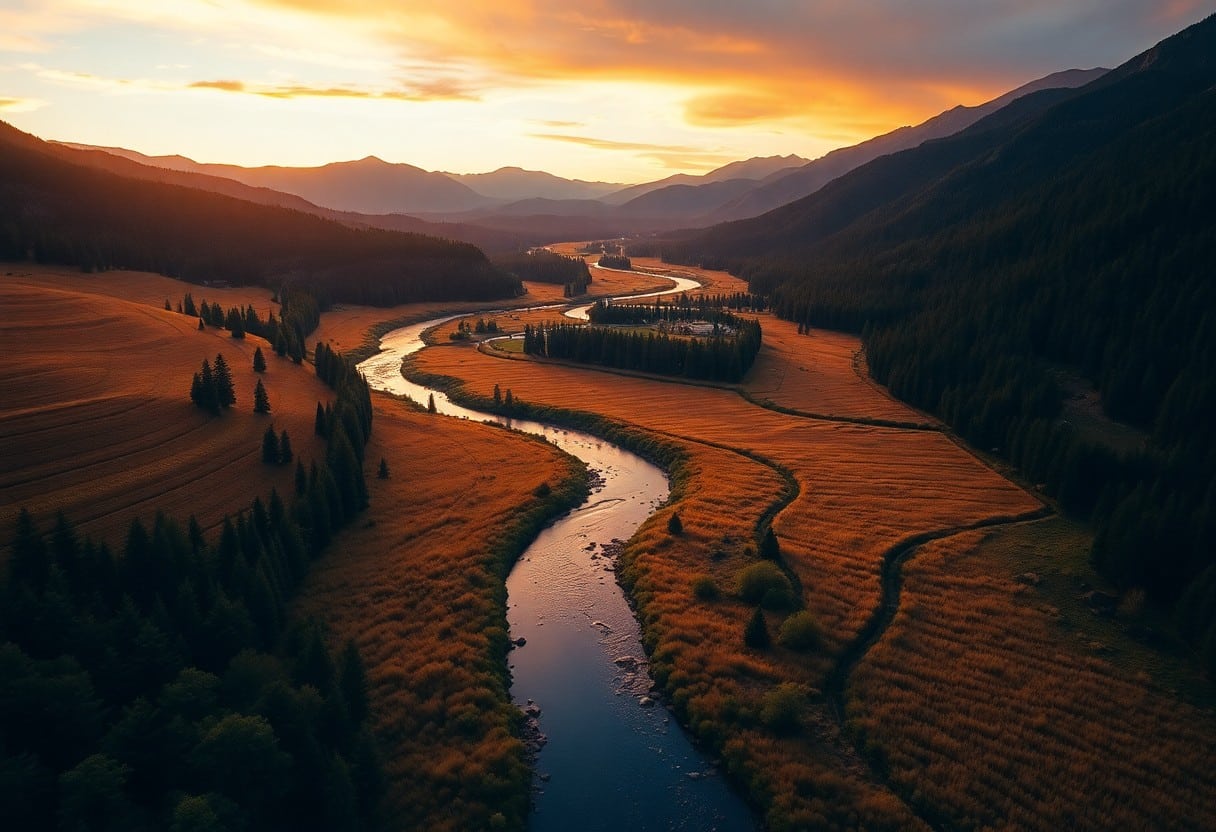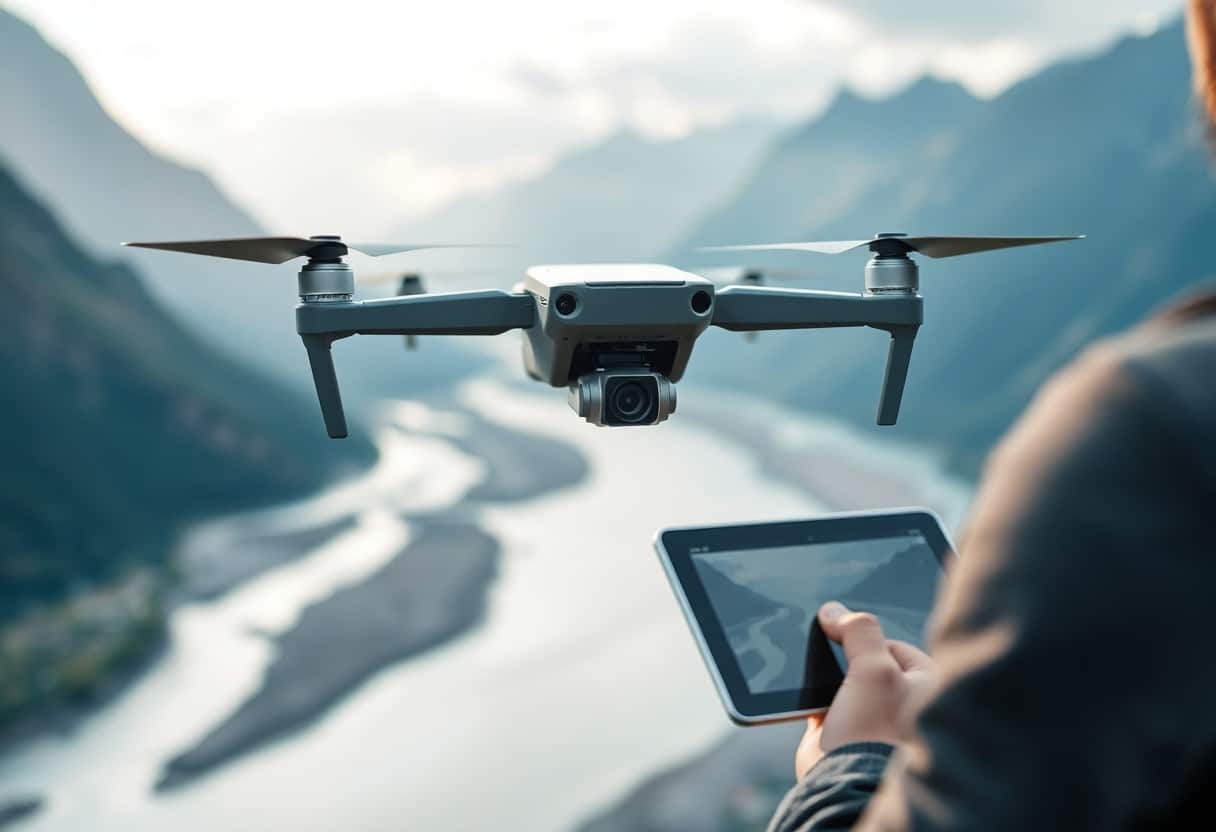What aerial composition tips make your drone photography stand out?
In today's drone photography, theMastering Aerial Composition Skillsis the key to making your photos stand out. You may be wondering, what can you do to make your work more attractive and professional? First of all.Pay attention to the foreground and background matchingThis will help direct the audience's attention. Secondly.Utilizing symmetry and line guidanceThe use of light and color can create a strong visual effect. Remember to study the use of light and color, which will greatly enhance the overall quality of your work. With these techniques, you will be able to create stunning aerial photography.

Key Points:
- foreground element: Adding the foreground to a shot can add depth and dimension to the photo.
- Guide Lines: The use of natural or artificially formed lines to guide the viewer's eye and enhance the composition of a photograph.
- Symmetry and Asymmetry: Using symmetry creates balance, while asymmetry adds movement and interest.
- Rule of Thirds: Dividing the screen into three equal parts so that the main elements are placed at intersections enhances the visual appeal.
- Color Contrast: Use bright color contrasts to draw the eye and make the photo stand out.
- Height and Angle: Changing the height and angle of the shot creates a new visual effect and a unique point of view.
- Editing and post-processing: Proper post-production editing can emphasize details and color tones to make a photo even better.
Understanding Air Structure
In aerial photography.CompositionIt is a key factor in determining the attractiveness of a photo. You need to learn how to utilize different compositional techniques to guide the viewer's eye and create a more visually appealing image. The right composition not only enhances the beauty of the image, but also strengthens the expression of the theme and makes your work more appealing.
the rule of thirds
The rule of thirds is a basic compositional technique that can help you create a balanced and harmonious image when taking photographs. You can divide the image into three equal parts and place the main subject at the intersection, which makes the photo more attractive and adds interest to the viewer's eyes.
Guide Lines
Guide lines are lines or shapes in a scene that can guide the viewer's eye; these can be natural landscapes, buildings, or roads. In your aerial photography, utilizeGuide LinesIt can effectively attract the viewers' attention and draw their eyes to the important parts, enhancing the depth and hierarchy of the photo.
By skillfully utilizingGuide LinesYou can make your images more dynamic and create a strong visual effect. These lines can be straight or curved, or even contrasting colors, but the key is to make them flow naturally and smoothly to guide the viewer's eye towards the important elements in the picture. This will not only emphasize the theme, but also make the overall composition more infectious, so that your aerial photography will stand out from the crowd.
Choosing the right angle
When you're doing drone photography.Choosing the right camera angleThis is the key. This not only enhances the beauty of the image, but also enhances the expression of the subject. Different perspectives can bring a very different feeling to the same scene, so before shooting, it's important to have a good idea of what you're going for.Take time to explore and compare perspectivesThe more you do it, the more attractive your work will be.
Bird's eye view and oblique angle
In Drone Photography.Bird's Eye Viewrespond in singingbevel angleEach has its own unique appeal. A bird's eye view angle provides an overall panoramic view, allowing the viewer to look down on the scene from above, while an oblique angle creates a stronger sense of movement and hierarchy.Choosing the right viewing angleIt depends on the message or emotion you want to convey.
Perspective and Depth
With the right angle and depth of view, your work can display a stronger sense of three-dimensionality and dynamism. Utilizing foreground objects to guide the viewer's eye can enhance the depth of the picture, while different changes in height can make the photo more vivid and create a sense of hierarchy, giving the viewer a sense of being in the scene.
During filming.Focus on the change of perspectiveand depth can make your work more attractive. Foreground elements such as trees or buildings can direct the eye and add gravity to the image. At the same timeUse different heights and angles to take picturesThe contrast between the subject and the background is more pronounced, enhancing the image's expressive power. Explore the combinations and you'll be amazed at the creative possibilities.
Lighting Considerations
When taking aerial photographs.lightImage quality is critical. You need to be aware of the different light sources and time periods and adjust your shooting schedule accordingly.10 Steps to Mastering the Rules for Commercial Use of Drones Many useful tips are provided to help you capture the best moments.
Golden Hour Photography
Dusk and dawn are the best times to take pictures, calledGolden HourThe light is soft and warm, adding a dreamy effect to your aerial photos. At this time of year, soft light and warm colors can add a dreamy effect to your aerial photos. Take advantage of these moments to make your photos more colorful and layered.
Adjusting Overexposure
In aerial photography, overexposure can lead to loss of detail. When you are faced withStrong sunlightMake sure you use the proper exposure compensation and shutter speed to avoid this when you have a bright background. Learning how to set your camera parameters can improve the quality of your photos.
To avoid overexposureUsing ND filtersIt is also a good choice. This filter reduces the amount of light entering the camera's sensor, allowing you to take sharp images in bright light. In addition, adjusting your camera's ISO setting and shutter speed can help you better control the light and capture a wider range of details. These techniques are essential to improving the quality of your aerial images, allowing you to achieve stunning results in challenging lighting conditions.

Incorporating foreground elements
In Drone Photography.Incorporating foreground elementsIt enhances the depth and layering of the image, making your work more appealing. This not only adds detail to the image, but also directs the viewer's eye, thus enhancing the overall visual effect.
Increased depth of surface features
utilizationGround CharacteristicsAs a foreground, it can effectively enhance the sense of space and depth of the image. When choosing the foreground, you can consider the natural elements around you, such as rocks, trees or paths, which can make the picture more vivid.
Creating a sense of scale
Creating in your drone photography worksense of scaleIt's important to present a spectacular view. By utilizing foreground elements, you can more clearly convey the size of the subject in proportion to its surroundings, allowing the viewer to feel the visual impact.
coerceCreating a sense of scaleYou can choose to add easily recognizable elements such as people or buildings to your screen. These elements serve as references to help the viewer understand the size of the space and make the overall image more appealing. Remember, the best way to blend foreground and subject is to create a harmonious proportion so that the overall image looks both balanced and natural.

Post-processing to enhance impact
In post-processing, you can add more to your aerial photos by adjusting the image.Visual Impact. Use the appropriate editing tools to emphasize the features of your photo and make the image more eye-catching. For a more in-depth look at the basics, you can check out theStep by Step - The 6 Best Techniques for Drone 3D ModelingThe
Enhanced color and contrast
appropriateColor Enhancementand contrast adjustments can make your aerial photography even more striking. Use the editing tools to enhance color vibrancy so that skyline and ground colors complement each other, creating stunning visual effects.
Cropping to improve composition
Cropping is an important step in enhancing your composition. By removing unnecessary elements, your photos can be more focused on the subject, while enhancingOverall AestheticsConsider using the one-third composition rule for a more balanced picture. Consider using the one-third composition rule for a more balanced picture.
Cropping not only removesdistractIt will also ensure that your subject stands out more. As a photographer, you should experiment with different cropping methods to find the best visual effect. Being careful to maintain the ratio of your photos, avoiding distortion and making the most important elements visible will greatly enhance the quality of your work.
Common Mistakes to Avoid
Avoiding common mistakes when doing aerial photography is key to ensuring great work. Make sure you understand thePhotography Tipsand methods that can help you improve the quality of your photos. ReferencesWhat weather precautions should you keep in mind for effective aerial photography?You can avoid these common pitfalls more effectively.
Overcrowded screen
When your image contains too many elements, it can detract from the overall aesthetics of the photo. Avoiding overcrowded images allows the viewer to better focus on the subject, allowing theMain FocusBe visible. Try to keep it simple and make sure each element has a purpose.
Neglect of the environment
When shooting, the impact of the environment on your work should not be overlooked. UnderstandingSurroundingsThe characteristics and features of your photographs can make them more vivid and engaging. This not only enhances the overall quality of your work, but also helps you to better realize the theme.
Ignoring the environment is not limited to the choice of location, but also includes the impact of light, weather and surrounding objects on the work. For example, choosing a location inTwilightPhotography can be utilized to enhance the atmosphere of the photo by using soft light. At the same time, pay attention to a variety of environmental factors, to avoid shooting in less-than-ideal conditions, which can improve the professionalism of your photography and avoid possible mistakes.
Aerial Composition Tips to Make Your Drone Photography Stand Out
Mastering aerial composition techniques will make your drone photography better. First, use rules such as the rule of thirds to balance the image and utilize the foreground and background to add depth. Also, consider the light and time of day when you're shooting, as natural light at dusk and dawn can enhance the emotional mood of your image. Finally, try different heights and angles to give your work more visual impact. As long as you stay creative and make the most of these tips, your drone photography will be eye-catching.
Frequently Asked Questions
Q: What are the basic principles of aerial photography composition?
A: The basic principles of aerial composition include following the rule of thirds, utilizing leading lines and frames to add a sense of dimension, considering foreground elements to enhance depth, and arranging the visual center of gravity in a way that will help your photographs look more balanced and compelling.
Q: How can I effectively utilize light to improve my aerial photos?
A: Taking advantage of the best times of day for natural light, such as sunrise and sunset, can result in photos with soft colors and long shadows. Also, look for shadows and contrasting scenes to create a visual impact and make the photo more appealing.
Q: What kind of angle should I choose when taking pictures?
A: Choosing a unique angle is an important factor in improving the quality of your aerial photos. Consider shooting from a low angle to emphasize the foreground, or from a high vantage point to show the wide landscape, which can enhance the storytelling of the photo.
Q: How do I add dynamic elements to a composition?
A: You can introduce motion by photographing moving objects such as people, vehicles or animals. In addition, photographing trees swaying in the wind or waves in the ocean can also bring a vivid effect and make the photo more alive.
Q: How can I use color in aerial photography to enhance the visual effect?
A: Color plays a key role in aerial photography. You can enhance the visual effect by choosing contrasting color combinations or taking advantage of natural colorful places (such as flower fields and autumn leaves) to make your photos more eye-catching.
Q: How to choose the right post-processing technique?
A: In post-processing, you can choose the appropriate technique depending on the subject matter. Adjusting contrast, brightness and saturation, adding accents such as fog or vignetting are all common ways to emphasize the subject of the photo or create a specific emotion.
Q: What are some common mistakes to avoid?
A: Common mistakes include ignoring the rule of thirds, using too much of a cluttered background, shooting in poor lighting, and over-processing. Avoiding these mistakes can greatly improve the quality of your aerial photos.




